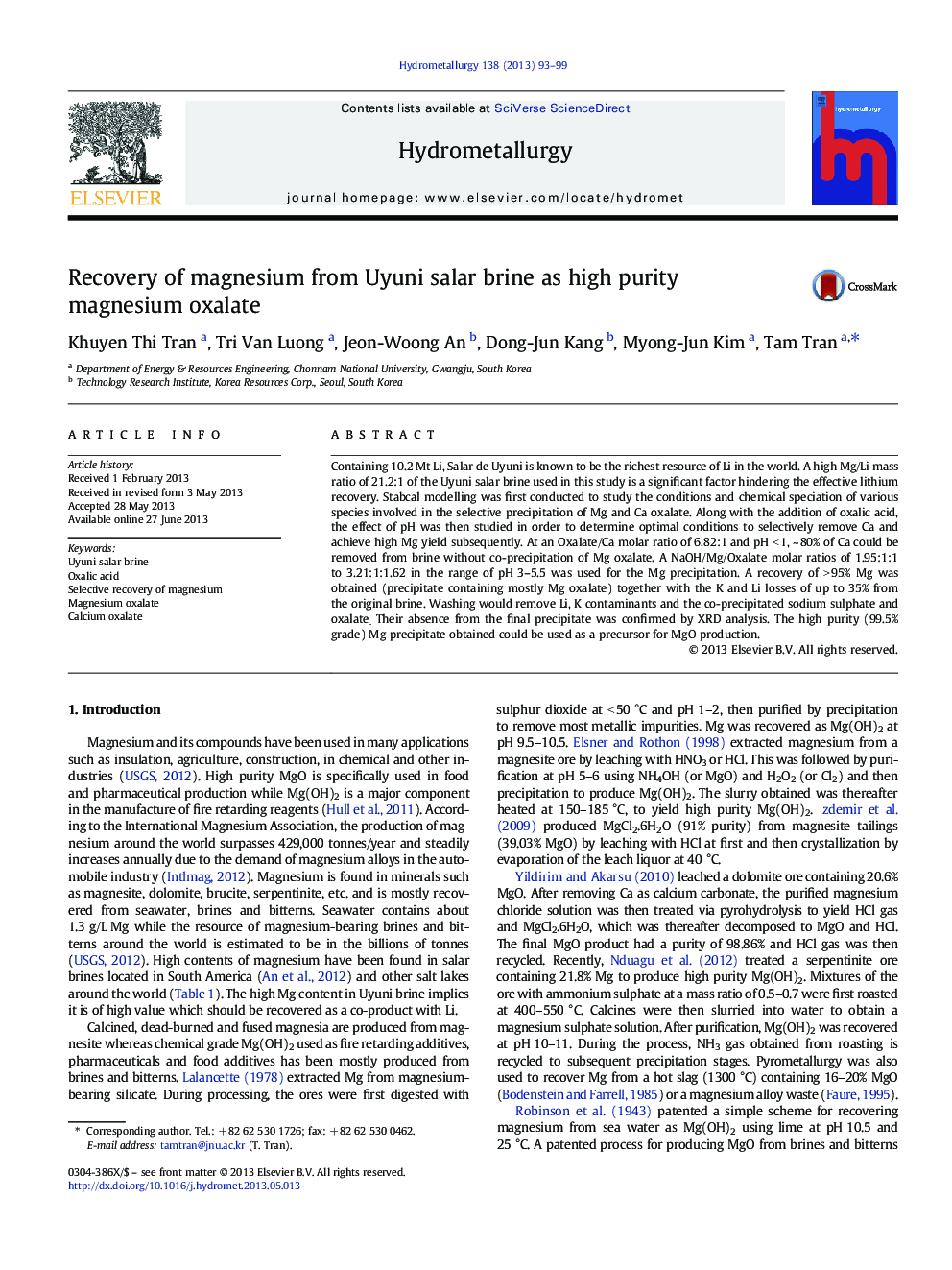| Article ID | Journal | Published Year | Pages | File Type |
|---|---|---|---|---|
| 6659314 | Hydrometallurgy | 2013 | 7 Pages |
Abstract
Containing 10.2 Mt Li, Salar de Uyuni is known to be the richest resource of Li in the world. A high Mg/Li mass ratio of 21.2:1 of the Uyuni salar brine used in this study is a significant factor hindering the effective lithium recovery. Stabcal modelling was first conducted to study the conditions and chemical speciation of various species involved in the selective precipitation of Mg and Ca oxalate. Along with the addition of oxalic acid, the effect of pH was then studied in order to determine optimal conditions to selectively remove Ca and achieve high Mg yield subsequently. At an Oxalate/Ca molar ratio of 6.82:1 and pH <Â 1, ~Â 80% of Ca could be removed from brine without co-precipitation of Mg oxalate. A NaOH/Mg/Oxalate molar ratios of 1.95:1:1 to 3.21:1:1.62 in the range of pHÂ 3-5.5 was used for the Mg precipitation. A recovery of >Â 95% Mg was obtained (precipitate containing mostly Mg oxalate) together with the K and Li losses of up to 35% from the original brine. Washing would remove Li, K contaminants and the co-precipitated sodium sulphate and oxalate. Their absence from the final precipitate was confirmed by XRD analysis. The high purity (99.5% grade) Mg precipitate obtained could be used as a precursor for MgO production.
Related Topics
Physical Sciences and Engineering
Chemical Engineering
Chemical Engineering (General)
Authors
Khuyen Thi Tran, Tri Van Luong, Jeon-Woong An, Dong-Jun Kang, Myong-Jun Kim, Tam Tran,
